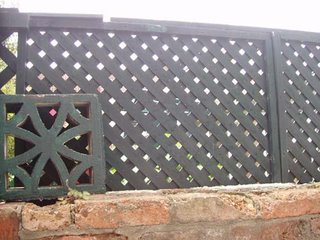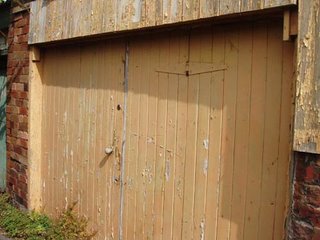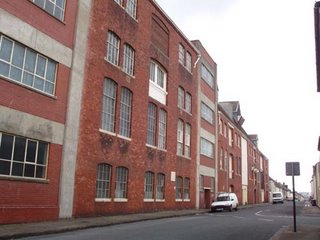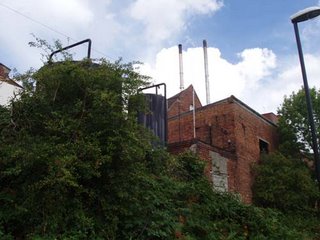In the last twenty or thirty years there have been some remarkable old bodies found preserved in bogs or ice. They are examined in detail by science people who can tell all sorts of things about the person, from where they grew up to what time of year they died and their five favourite fish.
In spite of this, corpses are a bolshie lot and often throw up more questions than answers. Most of them seem to have come to a sticky end and been done in by person or persons unknown in mysterious circumstances.
So here are some of my favourite dead bodies.
In the
Best-dressed category, we get
Otzi. Otzi died high in the Alps about 5,300 years ago wearing a fetching cloak made of grass and a pair of shoes of leather and woven grass. The design of the shoes was so good that they are now going to be made commercially.
Otzi died from being shot in the back with an arrow. Strangely, the arrowhead in his body wasn't found until a few years after his discovery in the early Nineties.
According to hair samples, he hadn't eaten meat or dairy products for years, but his last meal had been meat!? Doesn't make sense. I think the scientists have got something wrong there.
He also had 57 different tattoos on his body - all on acupuncture meridians.
Most Corpse-Friendly Location.It's got to be Lindow Moor. Somewhere in Cheshire, this spot has turned up three or four old bodies in the last twenty-five years. (They're not sure if some remains are one body or two)
The first one was a strange case - there was a guy living right next to Lindow Moor whose wife had disappeared in the 1950s. He told people he had killed her and buried her at the bottom of his garden. The police questioned him, but couldn't prove anything.
In the early 80s, the head of a woman the same age as his wife was found during a commercial turf cutting operation on the moor. The cops pulled him in again and this time he confessed to doing in his missus and burying her on the moor. It was only later that the head was discovered to be about 1800 years old.
But it was too late for him; he got convicted.
The next corpse found there was the biggy - the
"Lindow Man". The most complete bog body found in the UK
Salient features about him - Died between 2 BC and 119 AD; a young man not accustomed to manual labour; very well manicured nails - was he an aristocrat? a sorcerer? ; he'd been done to death in three different ways - bashed on the head, garrotted and stabbed. Someone didn't like him, or maybe he was a sacrifice. His last meal was a curious mix of burnt grains and he had ingested some mistletoe, suggesting a ritual.
There were either one or two more bodies found after him - the trouble was that the commercial turf machine had cut the remains into lots of pieces.
I did read that one body seemed to have two thumbs on one hand. But I think they just employed someone who wasn't very good at putting bodies back together.
I'm intrigued by the two thumbs though. He should have lived in the 20th century; he'd have been great at hitch-hiking.
Well, maybe not. Perhaps having two thumbs would put people off picking him up. They might think he was a weirdo or showing off.
Best HairstyleClonycavan Man from Ireland who died between 392 BC and 201 BC. He was a young man who had died from axe wounds.
The best thing was that he had a mohican hairstyle, held in place by a gel of pine resin and other stuff imported from Spain.
Most Impressive Grave Goods"The King of Stonehenge".This chap wasn't a bog body, but is certainly worth a
mention. His grave was found within a mile of Stonehenge. He was alive about the time that Stonehenge was built and people speculate that he may have been the brains behind it.
He was given the name "The Amesbury Archer" from the arrowheads found in his grave, but the media upgraded him to "King of Stonehenge" because the large number of grave goods indicated that he was very important. The hoard from his grave, of arrowheads, golden earings, etc. is the largest ever found from the Bronze Age; about ten times more than has ever been found before.
He wasn't a local man, but had grown up in Switzerland; they can tell that from the isotopes in his teeth.
Nearby they found another body of a younger man, obviously related to the king (maybe his son?) as they shared a similar deformity of the feet. They could tell from his isotopes that he had grown up in Scotland and might have visited Skegness in his late teens (sorry, I made that last bit up).
So that's my fave corpse list. Hope you like them.
Do you have a favourite corpse you'd like to see featured on this site?
Then send it along to:
SB4444
c/o The Internet,
London
Make sure you put the right postage stamps on the package.
For more information on posting corpses, read Royal Mail Leaflet No.194(a) Sending Dead Bodies through the Post.





































